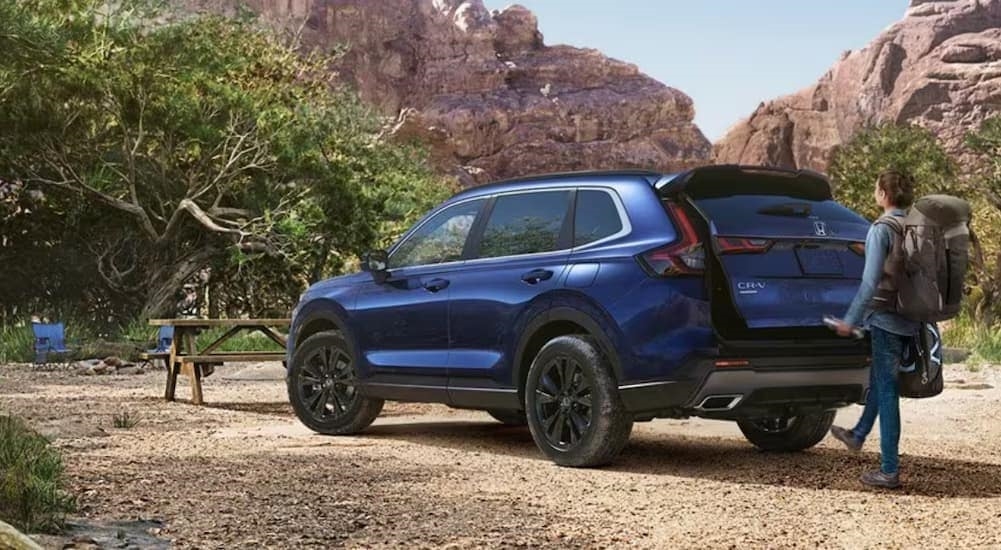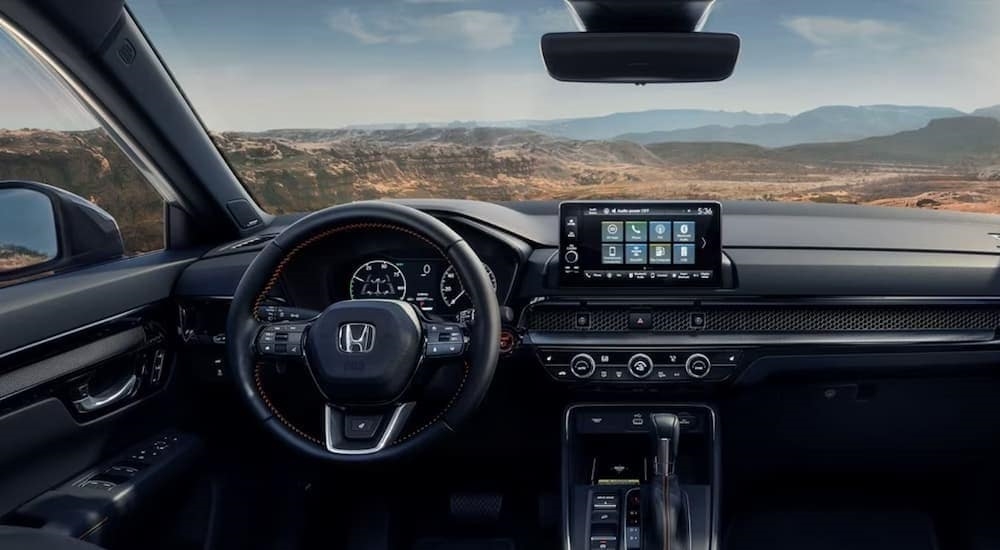There are some things that just go together naturally, like peanut butter and jelly or Honda SUVs and fuel efficiency. Okay, we know what you are thinking, and no, that is not a typo. Although SUVs are often linked to performance over efficiency, you can look at many of the Honda SUVs for sale and see that when it comes to this Japanese superstar, Honda is changing the relationship between SUVs and fuel efficiency.
Hybrid technology has been taking over lately, providing some of the best fuel efficiency available without going full EV. Not all vehicles offer hybrid technology, but many of them manage to provide an MPG that won’t make you cry unless it is out of happiness for the money you will be saving. Since the fifties, Honda has been providing the American automotive market with well-designed vehicles and innovative technology, and that technology plays a major role in their SUVs’ fuel efficiency.
The Road to Fuel-Efficiency Begins
Honda set its sights on fuel efficiency ages ago, determined to change how the industry thought about it. They didn’t just talk a strong game. The early 2000s saw a push from Honda to focus on technology that would increase fuel efficiency without sacrificing performance. Although many of these pushes involved the use of sedan-styled vehicles to demonstrate their vision, it wouldn’t be long until the SUV received the same treatment.
Introducing several hybrid systems, Honda was pushing ahead with vigor, even introducing the very first V6 hybrid in 2004. Pulling in 29 MPG city and 37 MPG highway, this hybrid tech was just the beginning. Although it was introduced on a sedan, this was a major step in improving SUV efficiency. At around the same time, Japan was experiencing the efficiency of the MDX, an SUV that boasted best-in-class fuel efficiency yet somehow accommodated seven.
Every year, Honda has rolled out new and improved fuel-saving technology meant to fulfill a long-term efficiency plan. Using different technologies, like diesel, flex-fuel, and engine tuning, Honda continues to show a solid plan to make a difference in the automotive world. One of these technologies has played a significant role in Honda’s efficiency since the beginning, and although it has been slowly fading away, its contribution to the efforts can’t be overlooked. That technology is the Variable Cylinder Management, otherwise known as VCM.
Variable Cylinder Management
Used in many of Honda’s vehicles, VCM technology has allowed Honda to provide performance and efficiency without having to choose between one or another. Variable Cylinder Management is technology that works in V6 engines to provide power when needed while also providing improved fuel efficiency. How exactly does this technology work? It is pretty simple in theory.
The VCM technology deactivates a single bank of cylinders, allowing a V6 to run with fewer cylinders when power is not needed. Using four or even three cylinders, the VCM technology gives the robust V6 more delicate efficiency if the full six cylinders aren’t needed. If the vehicle needs full power to operate, then the VCM will immediately reactivate all six cylinders, guaranteeing you have the power you need when you need it.
Although this technology is seemingly being faded out, it is impossible to deny its contributions to Honda’s overall fuel-efficiency plans. Working alongside some of Honda’s other top fuel-saving tech, the idea of VCM has surely helped direct and change the way Honda produces vehicles. The Honda Pilot is one SUV that still benefits from the VCM technology. Developed 20 years ago, the Honda Pilot is a three-row SUV that has ranked as one of the top-selling SUVs in the US thanks to its well-rounded offerings and, of course, its incredible fuel efficiency. The latest addition to the Pilot line-up pushes beyond what previous models were capable of, offering a more aggressive and powerful Pilot with equally impressive efficiency. It is safe to say that the VCM technology hasn’t been working alone, with another well-known puzzle piece in Honda’s fuel-saving picture still running strong today.
Variable Valve Timing and Lift Electronic Control
Better known as VTEC, Variable Valve Timing and Lift Electronic Control is an engine technology that vastly changed the way Honda vehicles manage fuel. Using specialized components and technology, Honda has revolutionized how the intake and exhaust valves are operated. Cam lobes change the timing and operation of the valves, improving performance but also fuel efficiency.
The Honda HR-V, which was introduced in 2016, still uses this technology with today’s latest models. The HR-V has been praised for its fuel efficiency since day one, seamlessly combining car-like features with SUV capabilities. Considered a small SUV, the HR-V benefits from its compact sizing and zippy style. Technology and design combine to offer one truly efficient vehicle that fits into that “just right” category.
Hybrid Technology for the Win
Any way you cut it, hybrid technology is an excellent fuel-saving option and has only improved with the years. Perhaps in the past, individuals felt like they had to sacrifice performance when driving a hybrid, but as time passed, the hybrid has proved that it can keep up with the best of the competition. The Honda CR-V is proof of this.
Beloved by nearly everybody who drives one, the CR-V seems practically perfect, and part of this has to do with the offering of a hybrid drivetrain. The CR-V is available in both traditional gas-powered options and hybrid options. Honda has been leading the field of hybrid technology for what seems like ages, and the introduction of the Hybrid CR-V in 2017 was only a stepping stone in future electrification plans.
To take a vehicle like the CR-V and combine it with hybrid tech was a milestone in the electrification of Honda. The CR-V has been a top-selling vehicle for some time, and it comes as no surprise that it would be a good candidate for hybridization. What do you do if you want to introduce the public to something? You use something already received with enthusiasm to help ease the transition.
Efficiency Tech Bulging At The Seams
Honda has no shortage of technology and designs geared towards improving fuel efficiency, but the goal isn’t restricted to saving money at the pump. Honda has made it clear that they are aiming for a change, and each program, feature, or mechanical component that boosts efficiency is simply a step towards overall change. Several years ago, the CEO of Honda Global, Toshihiro Mibe, made an announcement that proved Honda was not just talk; they were action. Toshihiro stated that “Honda will strive to realize carbon neutrality for all products and corporate activities Honda is involved in by 2050.” This ambitious statement is slowly coming to life as we watch every new Honda SUV strive for fuel efficiency.
From Eco Assist—which monitors the efficiency level of a driver’s actions—to fully electric models like the Prologue, Honda is serious about making a serious impact on efficiency. Whatever your reasons are for considering a Honda SUV, whether it be styling, performance, or efficiency, knowing that you are choosing a vehicle that is improving our future is a planet-friendly decision. From the all-around awesome CR-V to the ruggedly ready Pilot, you know when you choose a Honda SUV, you choose efficiency.


